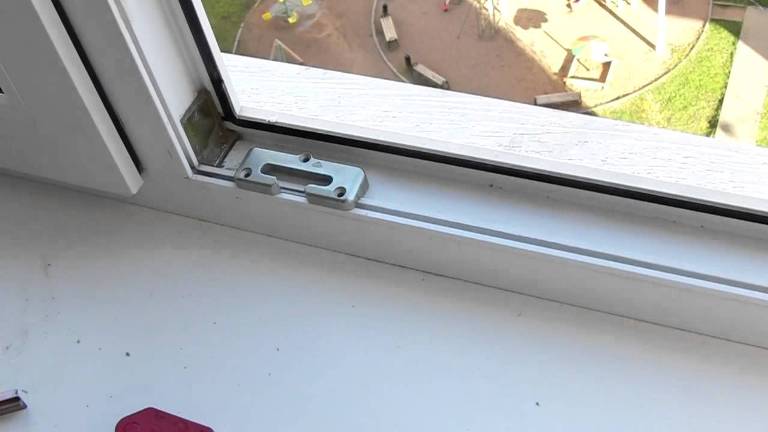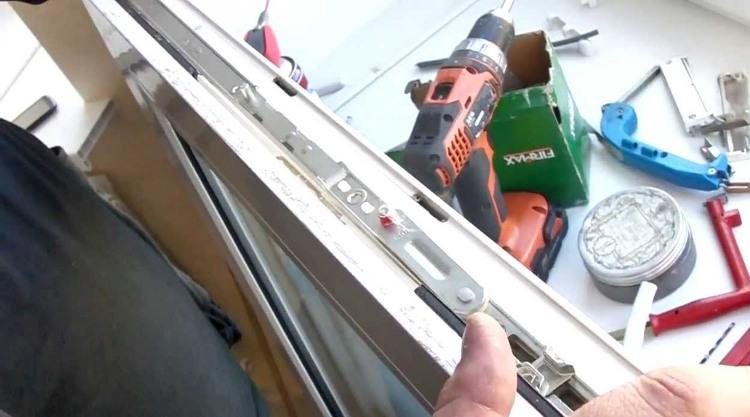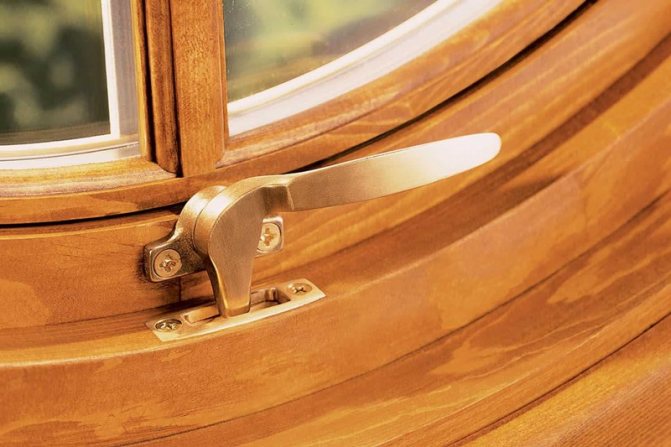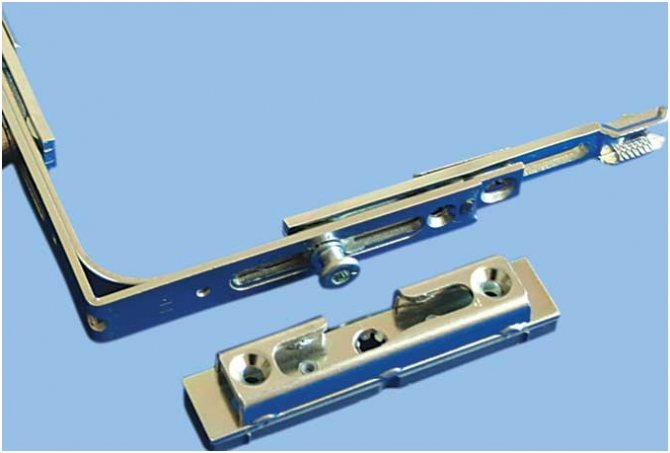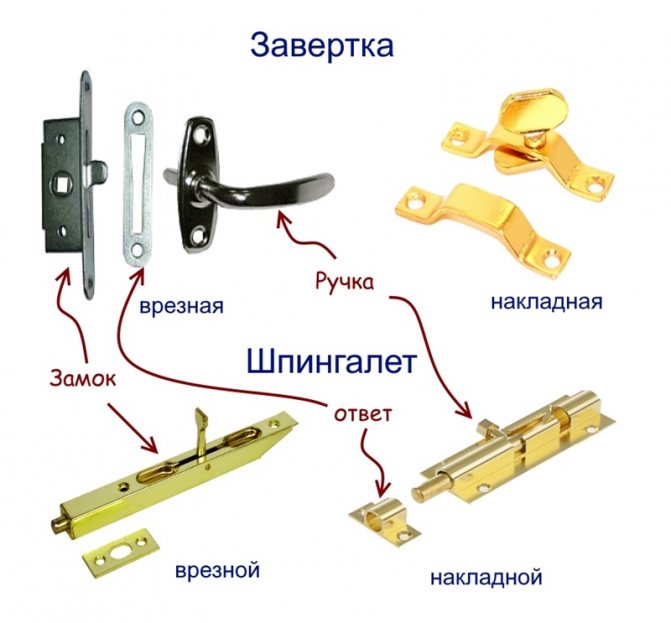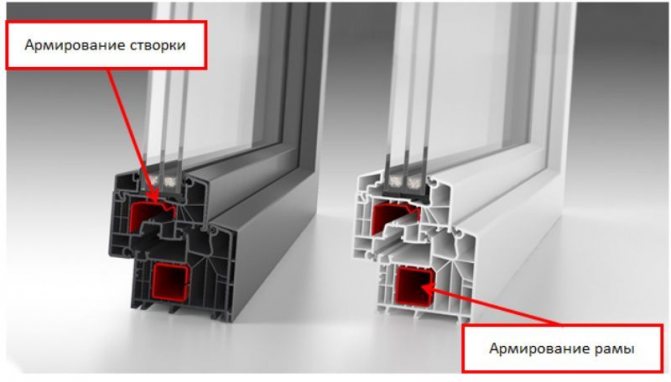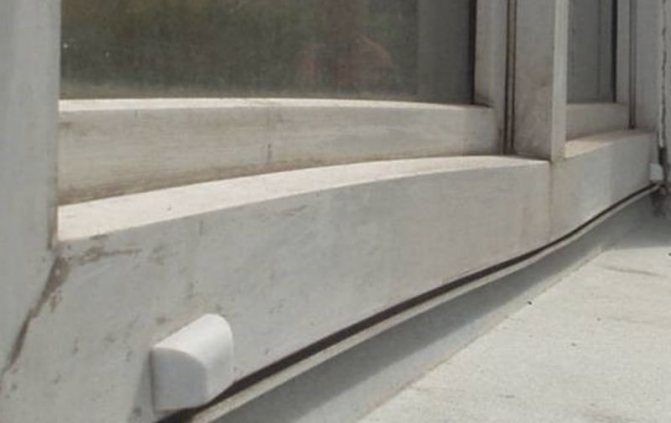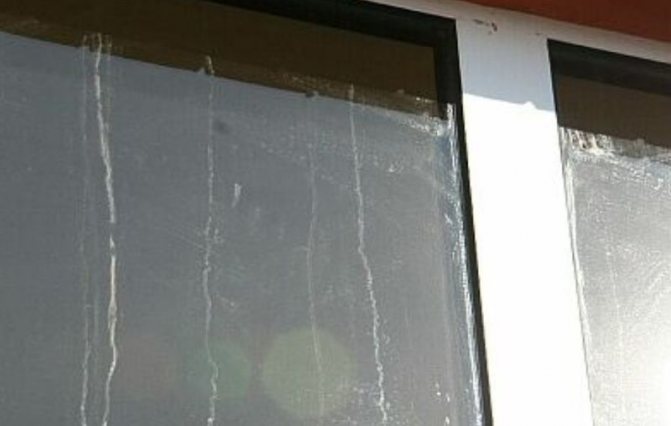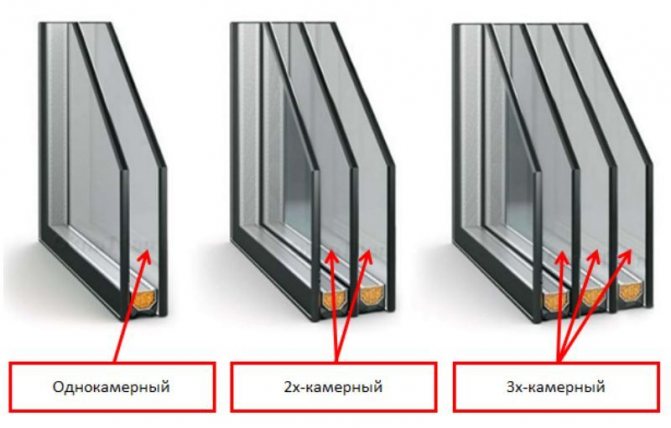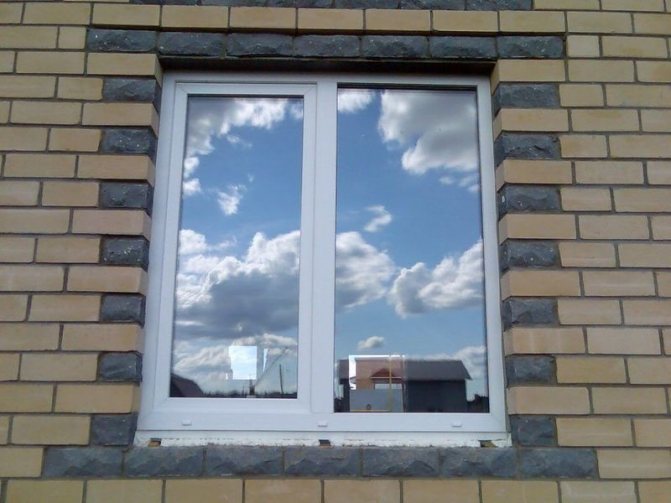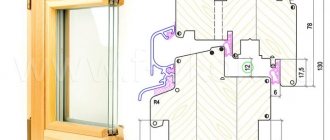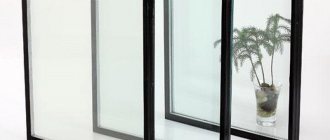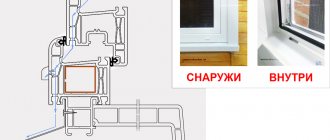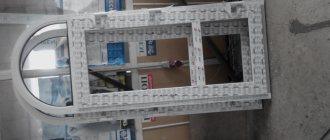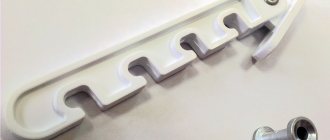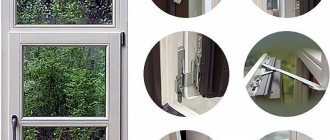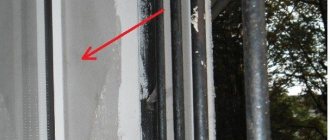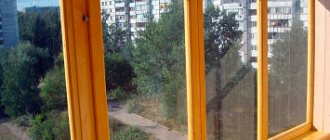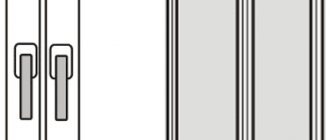Translucent structures made of polymer profiles are easy to use. All possible types of window opening are implemented in them, providing the possibility of intensive ventilation of the interior. The original mechanisms developed by engineers allow you to easily open the doors or set them to intermediate fixed positions.
The process of controlling the opening and closing of plastic windows is carried out by turning one single convenient L-shaped handle. Depending on the design of the mechanism, it can have several positions that correspond to the selected room ventilation mode.
Main elements
The design of PVC window blocks is significantly different from that of wood. For the convenience of mass production of the company, developers use a modular approach, which allows you to assemble finished products like a designer. Consider the main elements of plastic glazing:
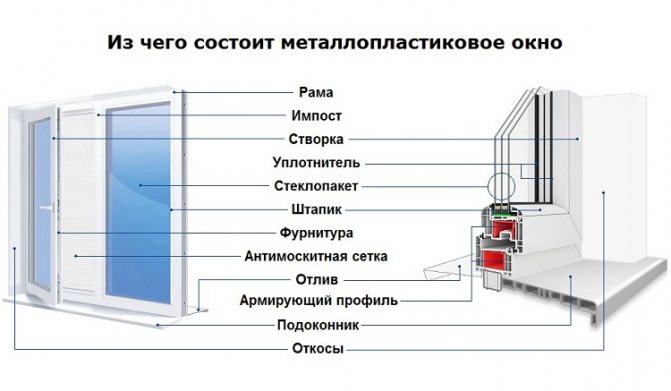
- Frame. Each window without fail has a supporting frame made of PVC profile, reinforced with metal.
- Sash... To open the window, sashes are placed inside the frame (also from a reinforced profile). If the opening is not provided, the glazing is installed directly into the frame.
- Impost... The inner part of the frame, designed to separate it and provide the necessary rigidity.
- Shtapik... As in traditional wooden windows, it is necessary to fix the filling elements (double-glazed windows, sandwich panels). The removable element is made of the same PVC profile, equipped with a sealing rubber.
- Glass unit... Element for transparent filling of wireframe openings. It usually consists of two or three panes, separated by a spacer with moisture-absorbing material. There are also options with single glass (sometimes several) and opaque filling (sandwich panel).
- Fittings... A set of assemblies and mechanisms designed to ensure fixation and opening / closing of window sashes in various positions. On most PVC windows, a swing-out system is installed, which includes hinges, a handle, strikers, and more.
- Window sill... Mounting element, with the help of which the inner space is covered from the bottom of the window block. The most common products are made of hollow plastic profiles. Despite the relative cheapness, they have sufficient strength characteristics, are practical and look good. More sophisticated options, made of solid reinforced polymers, are significantly more expensive.
- Ebb... A metal or polymer plate of a certain profile, which is mounted on the street side and is necessary for water drainage.
- Optional accessories... Such important little things as mosquito nets, ventilation elements, blinds, roller blinds, etc.
During the installation work, special profiles are also used for the correct connection of block parts, panels that form slopes (both external and internal). Some abutments are closed with strips or decorative strips. The presence or absence of these parts largely depends on the design of the windows of a particular manufacturer and the installation features.
Setting the pressure mechanism
Before you start fixing something, you need to know if it needs fixing.We close the window and use a lighter to reveal the presence of "see-through" areas. If the flame flutters, we get down to business. If you look at the window sash from the end, you can see three oval (most often) eccentrics. Try to twist the window handle and you will see that ex. So, they need to be twisted, but quite a bit, often a couple of millimeters is enough. Plus, there will be a reserve for a few more twists: do not forget that the seal also wears out. And, most importantly, do it so that the eccentrics are strictly in one position. To work with them, you will need either pliers or a hexagon. It is very useful that the eccentrics themselves have certain marks: if you see that they are "looking" at the street - you need to press harder, if the lines are directed into the house, the clamp is very good.
Profile system
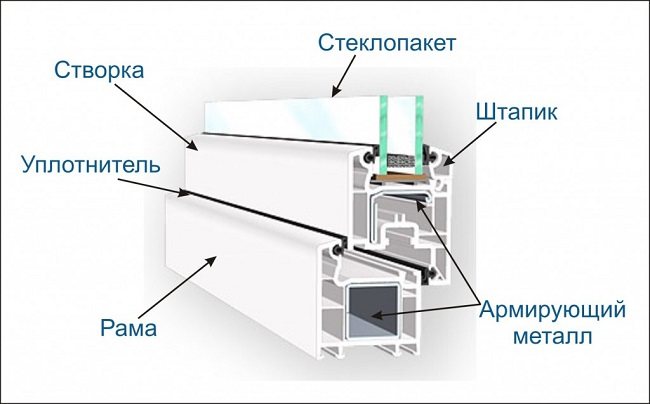

The profile system is considered to be the basis of plastic windows. In fact, the profile is a hollow PVC bar equipped with galvanized metal reinforcement for rigidity. To provide the required thermal insulation and strength characteristics, the internal cavity of the profile is divided into a corresponding number of compartments (chambers). The more of them, the more resistant the structure to deformations and the higher the overall energy efficiency of the window unit.
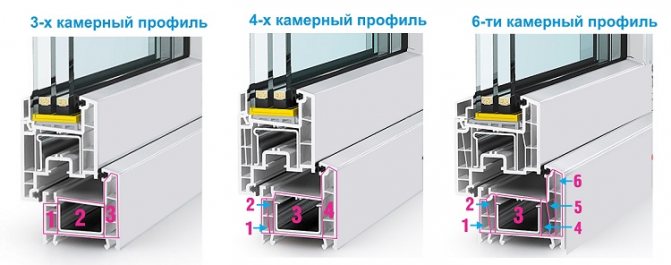

According to the wall thickness, there are three classes of profile systems - "A", "B" and "C":
- The highest quality - the thickness of the outer wall is not less than 2.8 mm. Internal partitions - from 2.5 mm.
- Middle class with an outer wall from 2.5 mm, an inner wall from 2 mm.
- There are no strict requirements for this category. The walls are thinner than those of the above classes.


Depending on the place of use, the following profile types are distinguished:
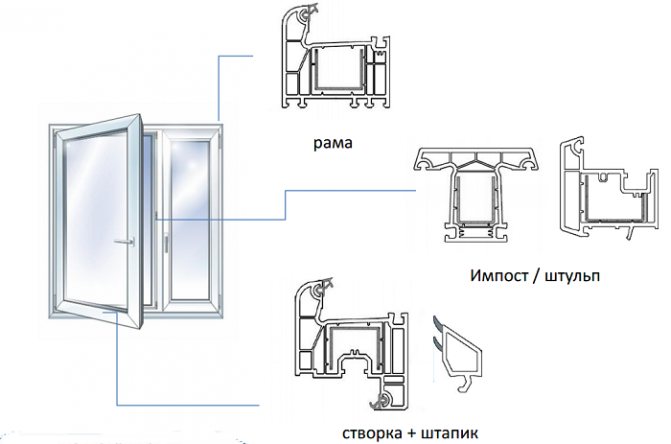

- Frame. It is used for the manufacture of the outer frame of the window block. Its plane, facing the opening, has small protrusions for better adhesion to the foam and proper fixation. On the reverse side there is a special overlap for the sash bolster, or for supporting a glass unit in blind blocks. The lower frame profile is made with a recess for mounting a window sill from the inside and an ebb from the outside. In addition, it may have drainage holes if the structure includes sashes. The holes are positioned in such a way that the water from the sash flows down to the low tide.
- Sash... Window detail designed for opening or rigid fixation inside the frame. The profile of this element is most often made in the form of the letter "Z". One protrusion is required to support the glass unit, the other for the overhead abutment to the frame. The mass and dimensions of the casement bar are slightly less than the frame one, moreover, it can use lighter reinforcing elements.
- Mullion profile... T-shaped frame element, with the help of which the decoupling (division into separate sections) of the window block is realized. The profile protrusions are located on the street side and serve as a stop for sashes or double-glazed windows. False impost is installed for the vestibule of the sash between each other without frame imposts, for example, if the customer needs a large window clearance.
- Glazing bead profile... A structural element of PVC windows, by means of which the glass unit is tightly fixed in the frame or sash. Its shape and dimensions differ depending on the base profile and type of glazing. Reliable fastening and easy replacement is possible thanks to special grooves in the frame and corresponding protrusions (legs) on one side of the glazing bead.
Important! Both in the frame and in the sash profile, special grooves are provided for the installation of rubber seals, which allows them to be replaced in case of destruction or loss of elasticity.
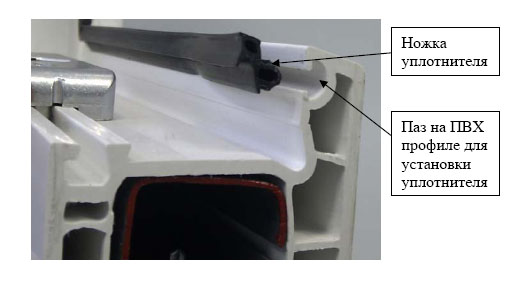

The profiles described above are used directly for the manufacture of window blocks. In addition to them, there are a number of additional parts for fixing the frame in the opening.
Fixed windows - windows without opening
Speaking about window fittings, one cannot but say that the glazing can be non-opening, otherwise deaf. Fixed windows are window constructions in which there are no opening elements (sashes).
A blind opening is the cheapest, since there are no costs for fittings and a sash in it. The advantage of such windows is a more panoramic view, since the sash does not overlap the additional space. The disadvantage of blind windows is that they are dangerous and difficult to clean. To do this, you will have to get up on the windowsill and stretch, putting your life in danger. If the window is completely deaf, then it can only be washed from the street. Another disadvantage of a blind window is that the room cannot be fully ventilated. This is especially true in regions with hot climates.
Often, window manufacturers offer customers to save on the window by increasing the proportion of blind elements in the window. The savings are really significant, from 1,000 to 1,500 rubles, but over time, the hostesses realize that this was their fatal mistake, and such a window has to be changed.
Double-glazed window - device and varieties
One of the functions of window units is to let light through. Therefore, translucent materials are most often used as filling, except for situations when it is necessary to close the lower and side parts of balconies or doors.
Traditionally, a double-glazed unit is installed in all plastic windows - a product consisting of two or three glasses, separated by a special frame. The spacer is made of polymer or aluminum profile. To prevent the formation of condensation inside the chambers, a special filler (absorbent) that absorbs moisture is placed in the frame.
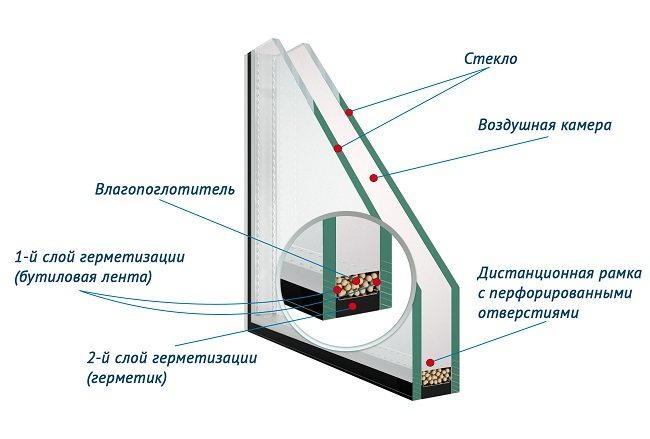

The thermal insulation properties of a glass unit depend on:
- number of cameras;
- filling gas (in cheap models they use dry air, in expensive ones - argon or krypton);
- the type of glass and the distance between them.
The optimal distance is considered to be 16 mm, but not more than 20 mm and not less than 10 mm. With a small clearance, heat losses increase significantly, and with a large one, convective processes begin to operate, which also reduces the energy efficiency of the filling.
The factors listed above, in addition to thermal conductivity, greatly affect the sound insulation of a room. External noise is most actively absorbed when two cameras are used together - 10 and 16 mm.
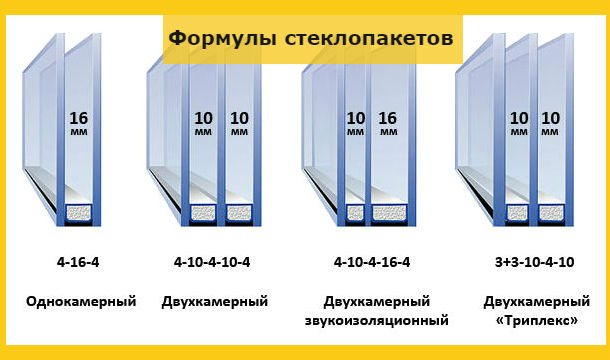

Glass
The budgetary and most common type is standard fully transparent glass, 4, 6, 8 mm thick, without additional qualities.
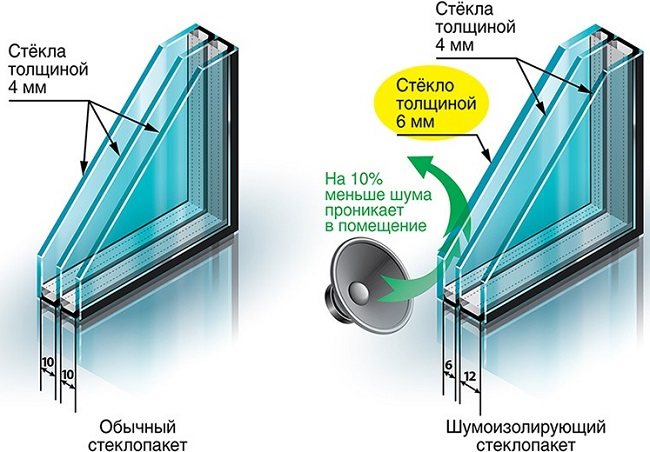

Energy-saving modifications on the inside of the chamber are covered with a special film of silver or tin oxides. The film reflects part of the solar heat from outside, which saves the resource of the air conditioner in summer and prevents heat loss from heating systems in winter. The main disadvantages of such glasses are their high cost and a decrease in the transparency of the light opening up to 30%.
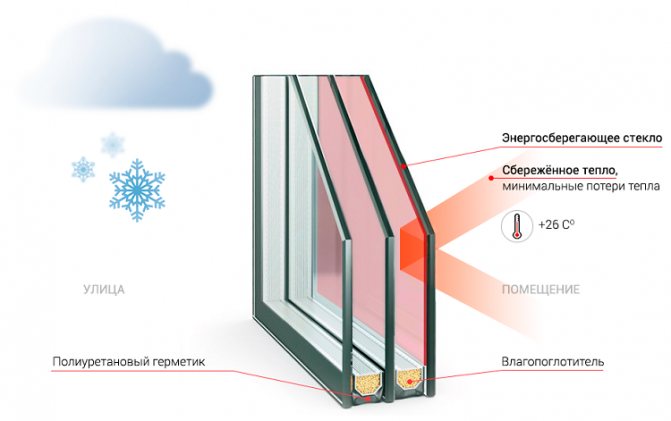

Shockproof products are highly resistant to external mechanical influences. The level of this resistance varies widely. From tempered products, which are slightly stronger than ordinary glass and, if damaged, crumble without forming dangerous fragments, to multi-layer armored models that can withstand quite serious shock loads.
Fittings
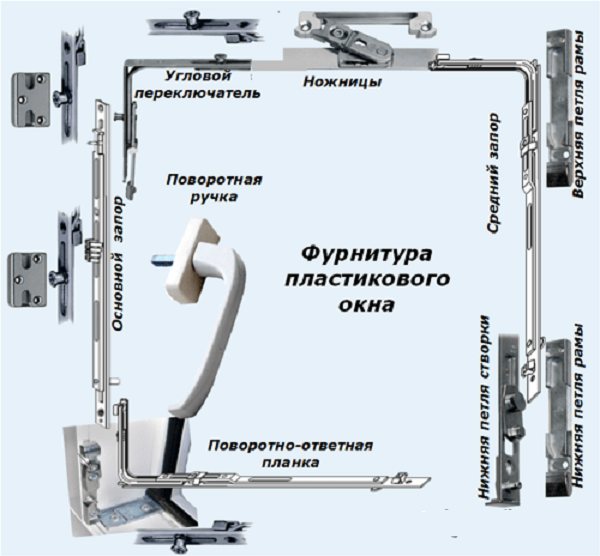

Fittings for plastic windows are a complex of elements combined into complex mechanisms, the purpose of which is to firmly fix the sash in relation to the frame, as well as to ensure opening / closing in a certain mode. Since the window is in direct contact with the external environment, the quality of materials largely determines its proper functioning.
PVC window fittings, like the windows themselves, were designed according to the principle of a constructor and include the following details:
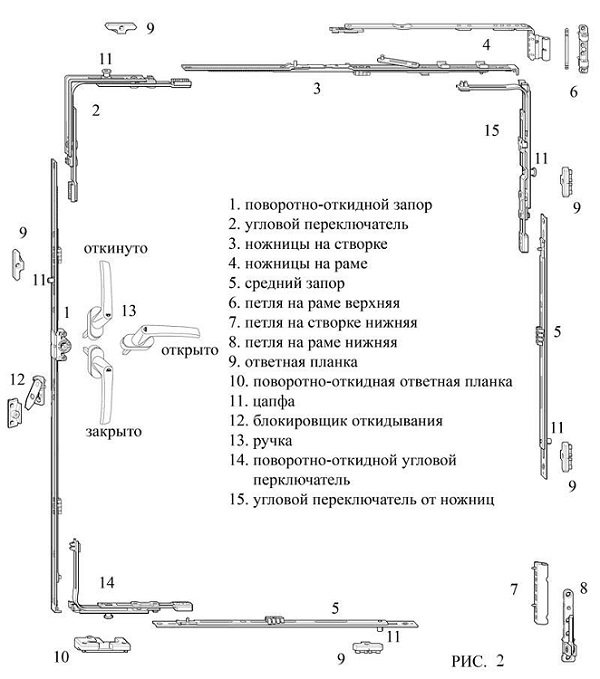

Plastic window hardware scheme
- Top and bottom hinges. Installed on sashes and associated frame sections;
- Blocking elements and striking plates;
- The mechanism of interaction of the handle with the hinge group and blocking elements (profile strapping located along the perimeter of the sash).
By the way of opening, the following types of fittings are distinguished:
- Swing-out... The most common option used in reinforced-plastic windows. The sash position is set depending on the angle of inclination of the handle. The traditional configuration provides two modes - swivel and tilt. More expensive models are equipped with step-by-step mechanisms or devices with a micro-ventilation function.

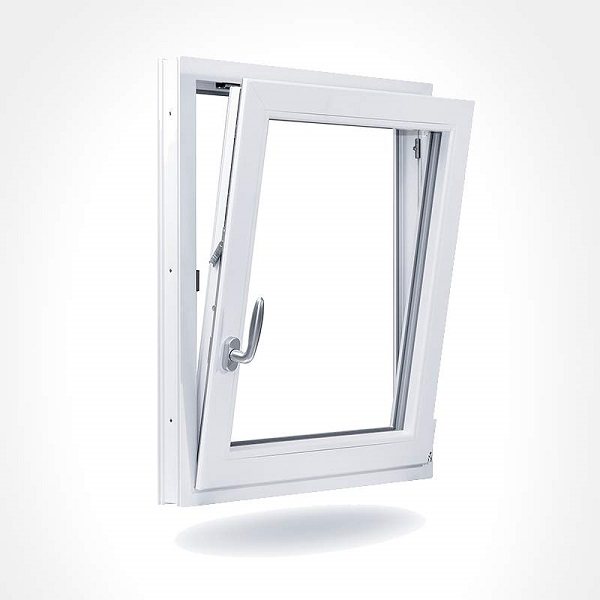
- Horizontal hanging... The sash opens horizontally, usually from top to bottom. Additionally, the mechanism can be equipped with limiters, an electric drive and a remote control. Allows to realize the opening on blocks of complex shapes (arched, elliptical and others).

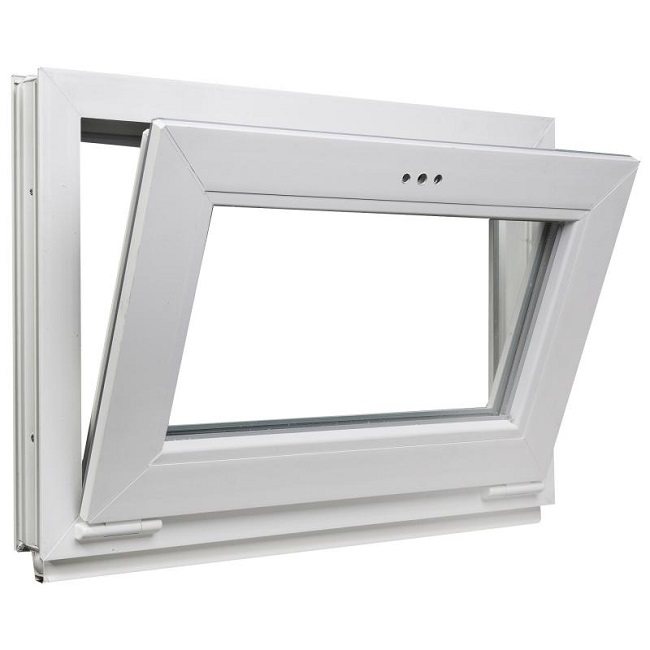
- Fittings for sliding metal-plastic structures... A set of rollers, guides, bridges and stoppers to ensure smooth displacement of the sash relative to the frame or other sash, as well as to fix it.

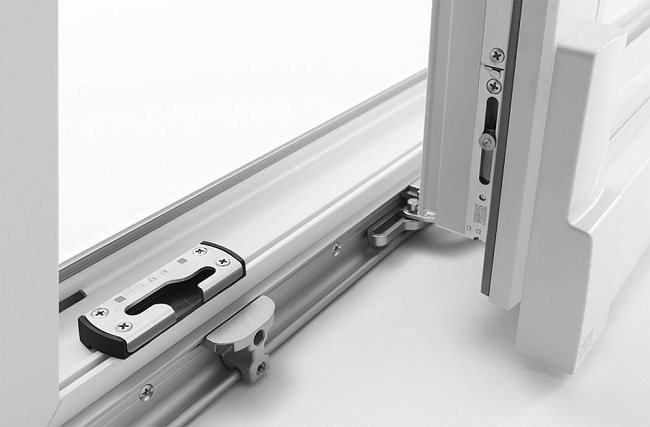
Varieties of fittings
- Opening limiter... It fixes the shutters in the required position; for smooth running, it can be equipped with a retarder.

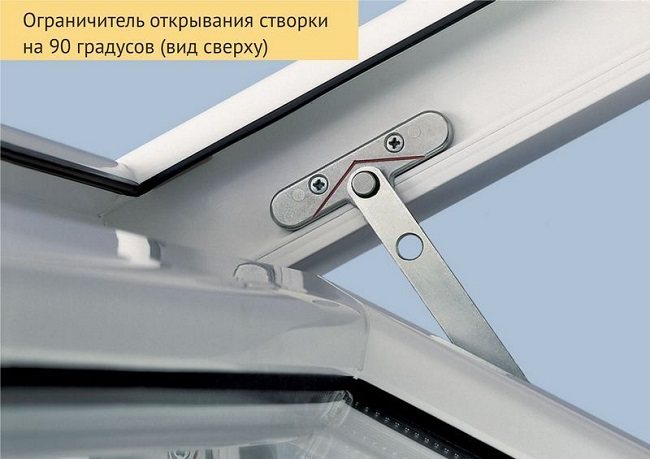
- Decorative overlays... Designed to cover the visible parts of the fittings. A large number of overlays with a small range of functional parts, as a rule, indicates a low quality of fittings.

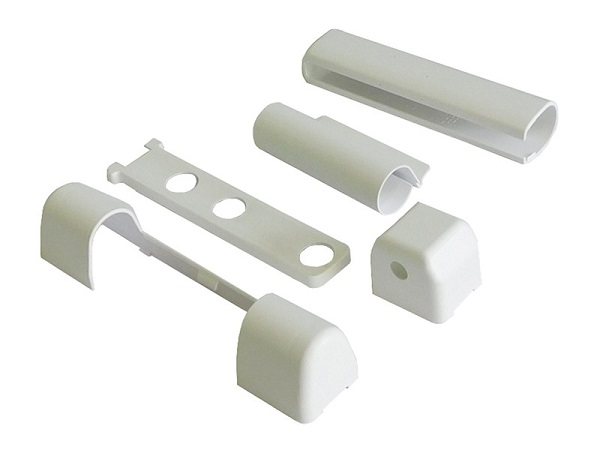
Hinge covers for plastic windows. - Latch... Locks the sash in a certain position, preventing arbitrary opening as a result of uncontrolled external influences.

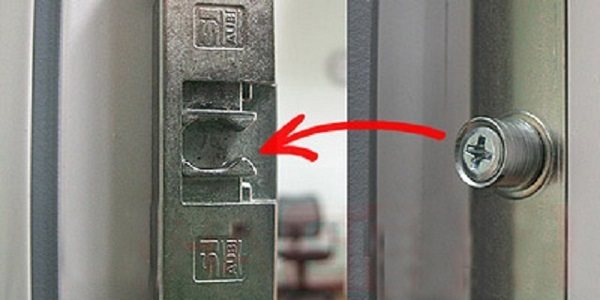
- Microlift... Roller mechanism for supporting the overall leaves in order to avoid their significant sagging. In addition, this reduces the load on the hinges, which significantly extends their service life.

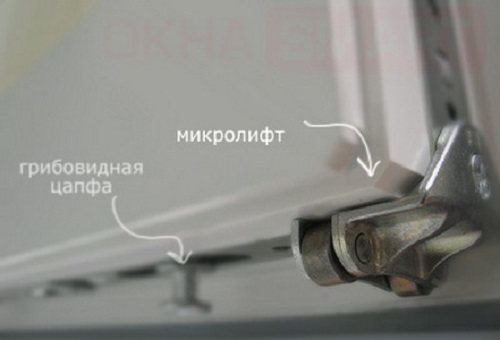
- Restraint scissors... Element used in the swing-out mechanism. Designed to fix the vertical gap of the sash according to the rotation of the handle. It should be remembered that its position must not be changed when the window is open, otherwise damage to the mechanism may occur.

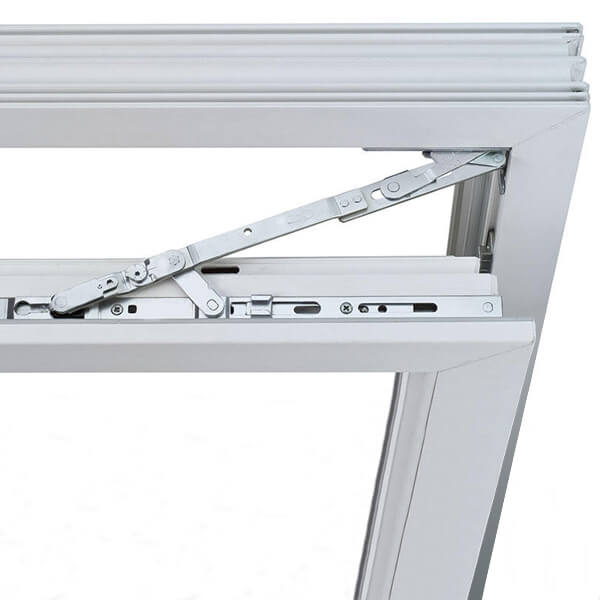
- Child protection (lock). Cuts into the handle or frame and prevents the window from opening fully.

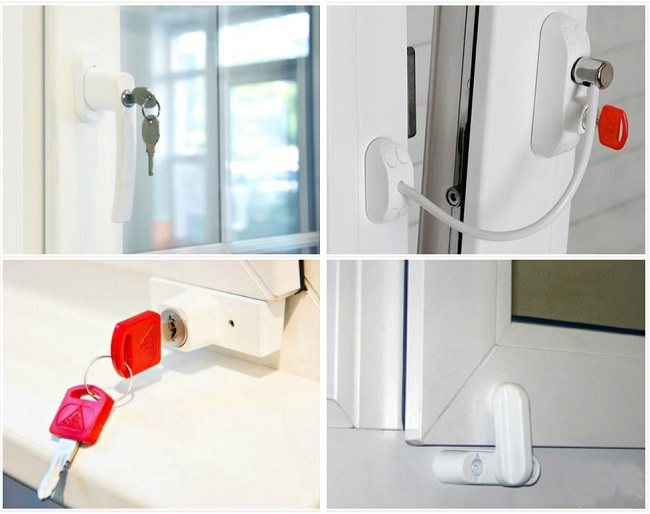
- Opening blocker. Similarly to the previous element, it limits the opening gap between the frame and the sash. There are special mechanisms that exclude simultaneous opening in tilt and swing modes.

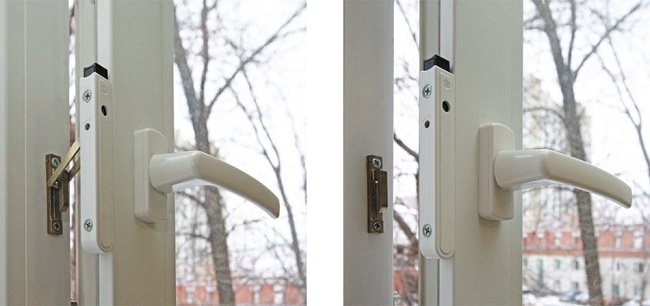
- Locking fittings... A set of elements to prevent unauthorized opening of the window. These include all sorts of latches, hooks, latches, as well as multi-locking locks.

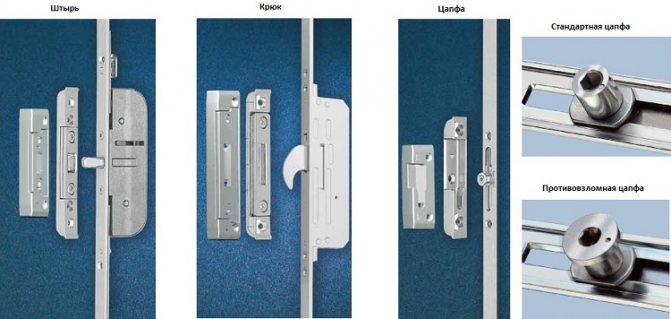
- Polymer sealing inserts... Rubber seals that ensure a tight abutment of the elements of the window unit to each other (sashes and frames, glass units and glazing beads, etc.).

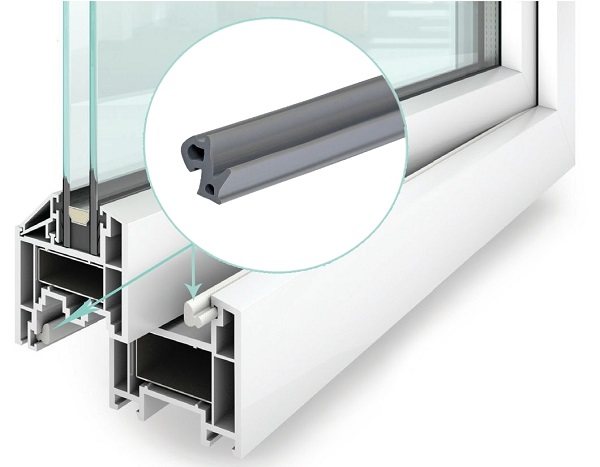
- Hinges... There are detachable and one-piece overhead modifications, swivel and tilt-and-turn, with protection against burglary, mounted on special threaded rods and countersunk. The latter are considered the most durable, but the opening is possible no more than 100 °.

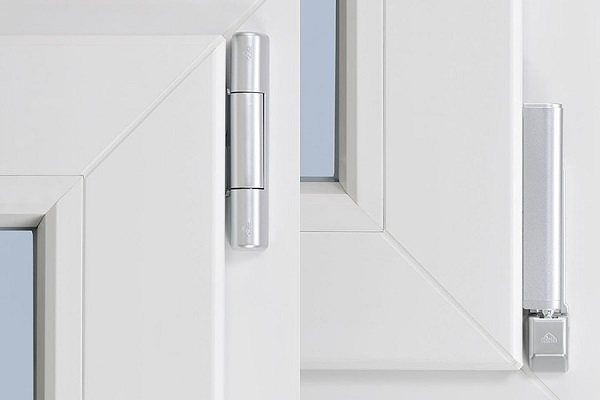
- Trunnions and strips... With their help, the hitching of the window elements is realized during swing or tilt opening, as well as fixation and tight pressing of the sash in relation to the frame is ensured.

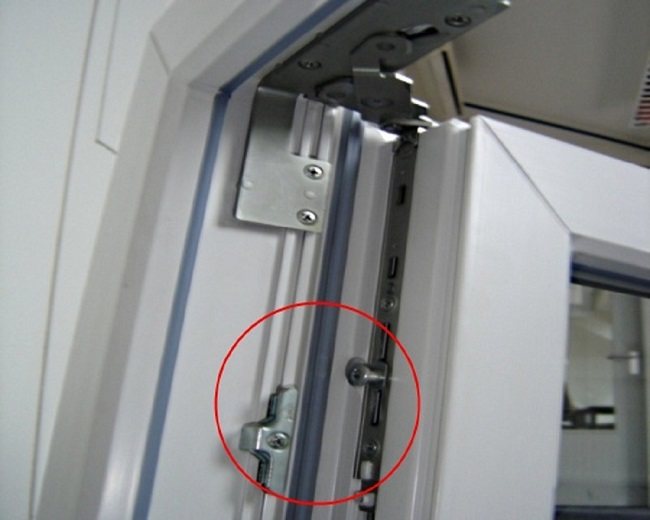
A separate category of fittings is various kinds of ventilation elements - ventilators, supply valves, etc. They are necessary to ensure sufficient air circulation in a plastic-glazed room.
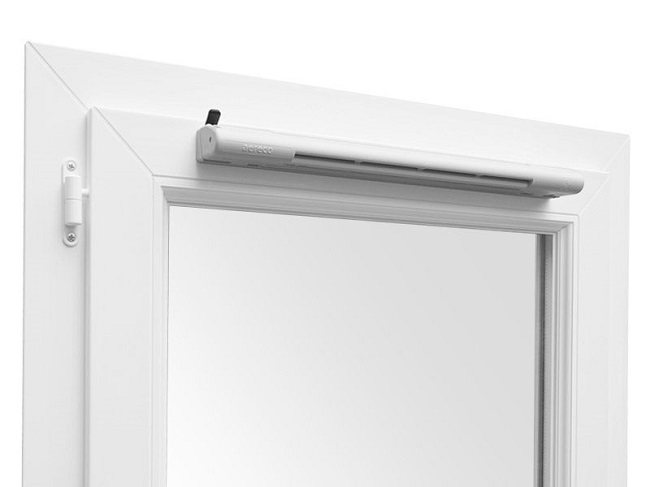

This is primarily due to the high degree of sealing of the latter.Despite the rich assortment and functionality of ventilation fittings, it will not work properly in the absence of air access channels to the room from outside.
Troubleshoot handle problems
The problem of repairing the handle of a plastic window is the most frequent and usually the first thing that worries happy owners of a plastic window. For example, the handle is loose and, as a result, does not close as it should. It seems like there is nothing to approach: neither you bolts, nor you springs - almost a monolithic contraption. It was not so: the plate at the very base of the handle rotates, and already under it there are just two screws.


The screws are under the plastic panel
If the handle just dangles, tighten the bolts; if the handle is broken and cannot be restored, we simply replace it with a new one and use it. You can buy such a handle at every construction market or from dealers and sellers of plastic windows. In a word, one of the few problems that can be solved without the help of a specialist.
Another problem: the handle may just stick. If it feels “tight”, roll it up, remove dust and debris, and spray with WD-40 spray.
